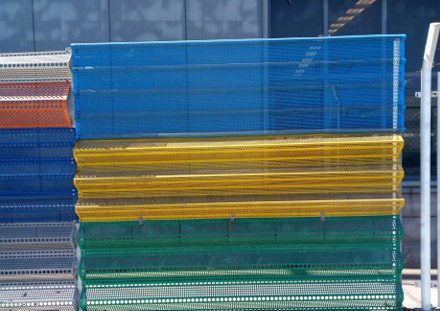The Importance of Steel Drainage Grates A Comprehensive Overview
Steel drainage grates are an essential component of urban infrastructure, playing a crucial role in managing stormwater and preventing flooding in city environments. These grates are designed to cover drainage systems while allowing water to pass through safely, ensuring that rainwater is effectively channeled away from roadways, sidewalks, and public spaces. In this article, we will explore the significance of steel drainage grates, their various types, and the advantages they offer.
Functionality and Design
At their core, steel drainage grates serve a straightforward purpose to facilitate the flow of water into drainage systems while keeping solid debris out. This prevents blockages that could lead to overflows and flooding during heavy rain. Steel is often the material of choice for these grates due to its durability and resistance to harsh environmental conditions. Unlike plastic or concrete, steel grates can withstand heavy loads and resist corrosion over time, making them ideal for high-traffic areas such as roads and parking lots.
The design of steel drainage grates varies based on their application. Some grates are flat and wide, allowing for maximum water intake, while others have intricate patterns that not only increase performance but also enhance aesthetics. Many municipalities and construction companies opt for custom designs to fit specific needs, including those that prevent the entry of larger debris while still allowing for optimal water flow.
Types of Steel Drainage Grates
There are several different types of steel drainage grates available, each tailored for specific applications
1. Heavy-Duty Grates These are designed for areas subjected to significant load stress, such as highways and industrial zones. Heavy-duty grates can bear substantial weight, ensuring they do not buckle or warp.
3. Anti-slip Grates For environments where foot traffic is common, anti-slip grates provide additional safety. Their surface texture helps prevent slipping, especially in wet conditions.
steel drainage grates

4. Decorative Grates These grates feature stylish designs that blend seamlessly with architectural features. They not only perform the essential function of drainage but also enhance the visual appeal of a space.
Benefits of Steel Drainage Grates
The advantages of using steel drainage grates extend beyond durability and functionality. Some of the key benefits include
1. Longevity Steel is resistant to many elements that can damage other materials, such as rust, weathering, and heavy impacts. This longevity translates to lower maintenance costs over time.
2. Sustainability Steel is recyclable, making these grates an eco-friendly choice. When they reach the end of their lifespan, they can be repurposed rather than contributing to landfill waste.
3. Safety Well-designed drainage grates can prevent accidents by ensuring that water is moved efficiently, reducing the risk of standing water that can lead to slips and falls.
4. Versatility Steel drainage grates come in various shapes and sizes, allowing for their use in a multitude of settings, from urban streets to park pathways.
Conclusion
In summary, steel drainage grates are an indispensable part of effective stormwater management in urban settings. Their durability, variety in design, and numerous benefits make them a preferred choice for municipalities, architects, and builders alike. By investing in high-quality steel drainage grates, communities can safeguard their infrastructure, improve safety, and enhance the aesthetic value of public spaces, all while contributing to efficient water management systems. As cities continue to grow and face challenges related to climate change and urban flooding, the importance of these grates is more significant than ever.
-
Why Galvanized Trench Cover Steel Grating Resists Corrosion
NewsJul.10,2025
-
The Versatility and Strength of Stainless Expanded Metal Mesh
NewsJul.10,2025
-
Load Calculations in Steel Grating Platforms
NewsJul.10,2025
-
Keeping Pets and Kids Safe with Chicken Wire Deck Railing
NewsJul.10,2025
-
Hole Diameter and Pitch for Round Perforated Metal Sheets
NewsJul.10,2025
-
Aluminium Diamond Mesh in Modern Architecture
NewsJul.10,2025
Subscribe now!
Stay up to date with the latest on Fry Steeland industry news.

